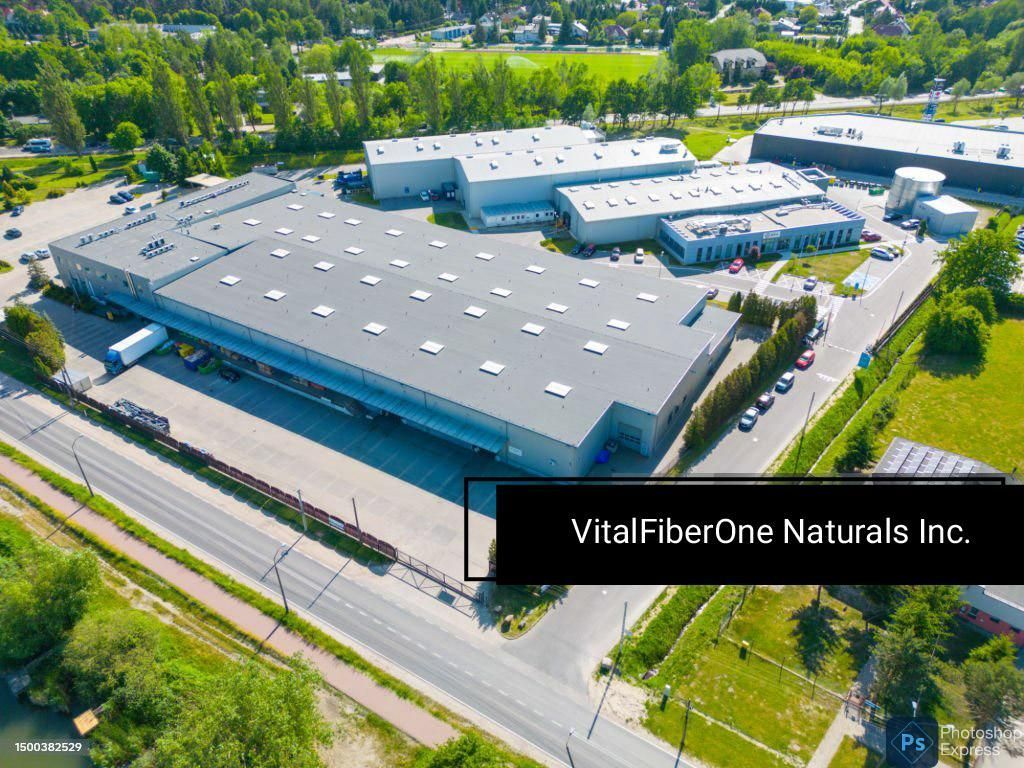Blog-Layout
Dietary Fiber Holds the Key to AMAZING Health Benefits?
VitalFiberOne Naturals Inc. • January 3, 2025
The Profound Health Benefits of Dietary Fiber: Bridging the Gap with Science

Dietary fiber is a cornerstone of a healthy diet, offering a multitude of health benefits backed by robust scientific evidence. However, both children and adults in the United States consume less than half the recommended daily intake—a concerning dietary gap that requires immediate attention.
While dietary fiber is often associated with improved digestion, its influence extends far beyond gut health. Recent research highlights the critical role fiber plays in preventing chronic diseases, promoting weight management, and boosting overall wellness.
The Critical Link Between Dietary Fiber and Health
A groundbreaking study led by James W. Anderson, along with a team of renowned researchers, underscores the transformative impact of dietary fiber on health. Their findings reveal that individuals with high fiber consumption experience significantly lower risks of:
Coronary heart disease
Stroke
Hypertension
Diabetes
Obesity
Gastrointestinal diseases
The study also highlights the positive effects of fiber on metabolic health. Improved glycemia and insulin sensitivity were observed among both diabetic and non-diabetic individuals. Furthermore, fiber supplementation facilitated weight loss in obese individuals, emphasizing its importance for effective weight management.
For gastrointestinal health, the benefits are equally profound. Increased fiber intake alleviates conditions such as:
Gastroesophageal reflux disease (GERD)
Duodenal ulcers
Diverticulitis
Constipation
Hemorrhoids
Moreover, the prebiotic properties of certain fibers enhance immune function, fortifying the body's natural defenses.
Dietary Fiber: Essential for All Ages
Interestingly, the study reveals that these health benefits apply equally to children and adults. The researchers recommend a daily intake of 14 grams of dietary fiber per 1,000 kcal, a guideline that can significantly enhance public health outcomes if widely adopted.
Bridging the Fiber Gap: Why Are We Falling Short?
Despite the well-documented benefits, dietary fiber consumption remains alarmingly low. The primary reasons include:
Lack of consumer awareness about fiber’s health benefits
Limited understanding of how to incorporate fiber-rich foods into daily meals
To address this gap, education and accessibility are paramount. Encouraging the consumption of naturally fiber-rich foods—such as fruits, vegetables, whole grains, and legumes—alongside supplements like VitalFiberOne™, can help individuals meet their daily fiber needs.
The Role of Industry and Research
This pivotal study was supported by the National Fiber Council, Procter & Gamble, and the High Carbohydrate, Fiber (HCF) Nutrition Research Foundation. Such collaborations between research institutions and industry stakeholders highlight the importance of dietary fiber in combating the global health crisis.
How to Increase Your Fiber Intake
Integrating more fiber into your diet doesn’t have to be challenging. Here are some practical tips:
Start your day with fiber-rich breakfast cereals or oats.
Incorporate fruits and vegetables into every meal.
Switch to whole-grain options for bread, rice, and pasta.
Snack on nuts, seeds, or high-fiber bars like those from VitalFiberOne™.
Experiment with fiber-rich recipes for variety and flavor.
Closing Thoughts: Fiber for a Healthier Future
Dietary fiber is more than just a nutrient—it’s a key player in the fight against chronic diseases, obesity, and digestive disorders. By understanding its benefits and making conscious efforts to include fiber in our daily meals, we can bridge the gap between current consumption levels and optimal health outcomes.
To learn more about this compelling research, contact the study's lead author, JW Anderson, at the University of Kentucky, 913 Taborlake Court, Lexington, KY 40502, USA. Email: jwandersmd@aol.com | Phone: +1-859-269-6642 | Fax: +1-859-422-4670.

By VitalFiberOne Naturals
•
March 28, 2025
Are you tired of feeling sluggish and run down? Discover the secret to boosting your energy levels with Acacia Fiber! This natural superfood is packed with nutrients and prebiotics that help support a healthy gut, increase energy production, and even aid in weight management. In this article, we'll dive into the amazing benefits of Acacia Fiber and how you can incorporate it into your daily routine to feel more energized, focused, and vibrant. Say goodbye to fatigue and hello to a more energetic you!

By VitalFiberOne Naturals
•
March 17, 2025
Meditation has increasingly become an essential practice in our fast-paced world. For beginners, it offers a path to mental clarity, stress reduction, and inner peace. If you're new to meditation, you're in the right place! This comprehensive beginner’s guide will introduce you to easy yet effective techniques to embark on your journey towards serenity. What is Meditation? Meditation is a mindful practice that involves focusing your mind and eliminating distractions to achieve a mentally clear and emotionally calm state. Regular meditation can transform your overall wellbeing and enhance your daily life. Benefits of Meditation Reduces Stress and Anxiety: Regular meditation lowers cortisol levels, significantly reducing stress and anxiety. Improves Focus and Concentration: Meditation enhances your attention span and cognitive abilities. Enhances Emotional Health: It encourages positive thinking and emotional resilience. Boosts Physical Health: Studies link meditation to lower blood pressure, improved sleep, and better immune function. Preparing Your Meditation Space To meditate effectively, create a dedicated space that is quiet, comfortable, and free from distractions. Consider adding elements like cushions, candles, or calming decor to enhance tranquility. Choosing a Meditation Style There are several meditation styles suitable for beginners: Mindfulness Meditation: Focuses on being present and fully engaged in the current moment. Guided Meditation: Involves a teacher or recording guiding you through visualization exercises. Breath Awareness Meditation: Concentrates on mindful breathing to center the mind. Choose the style that resonates with you and your goals. Your First Meditation Session Here's a simple step-by-step guide to your first meditation: Find a Comfortable Position: Sit or lie comfortably, maintaining good posture. Set a Timer: Start with 5-10 minutes and gradually increase your session length. Close Your Eyes: Gently close your eyes to minimize visual distractions. Focus on Your Breath: Pay attention to your breathing, noticing each inhale and exhale. Gently Refocus: When your mind wanders, calmly bring your attention back to your breathing. Overcoming Common Meditation Challenges Many beginners face common challenges such as restlessness or mind wandering. Remember, these are normal experiences. Practice patience and consistency, gently guiding your focus back to your breath without judgment. How Often Should You Meditate? Consistency is key. Aim for short daily sessions of 5-15 minutes to build a sustainable meditation habit. Over time, you can gradually extend your sessions. I ncorporating Meditation into Your Daily Routine Make meditation part of your daily routine by: Meditating at the same time each day Pairing meditation with existing habits, like after your morning coffee or before bedtime Using reminders or alarms to keep consistent Utilizing Technology in Meditation Leverage meditation apps or guided online sessions to enhance your practice. Popular apps like Calm, Headspace, or Insight Timer offer beginner-friendly resources to support your journey. Meditation and Physical Activity Pairing meditation with physical activities such as yoga or walking can amplify its benefits, creating a holistic wellness routine that supports both mind and body. Tracking Your Meditation Progress Keeping a meditation journal or using an app to track sessions helps visualize progress, boosting motivation and consistency. Common Myths About Meditation Meditation Requires Hours: Effective meditation can happen in just a few minutes each day. You Must Completely Clear Your Mind: Meditation is about observing thoughts without judgment, not eliminating them entirely. Dispelling these myths helps create realistic expectations and ensures a rewarding meditation experience. Conclusion: Embrace Your Journey to Serenity Meditation offers profound benefits even in small, consistent doses. With these foundational steps, you’re now ready to cultivate mindfulness, reduce stress, and enhance your overall wellness. Begin today, and discover the path to lasting serenity.

By VitalFiberOne Naturals Inc.
•
February 8, 2025
Revolutionize your diabetes care with the power of AI! Introducing GlucoAI Precision Technology, a game-changing innovation that's transforming the way we manage diabetes. This cutting-edge technology uses artificial intelligence to provide personalized insights and precise glucose monitoring, empowering individuals to take control of their health. Say goodbye to guesswork and hello to data-driven decision making. Learn how GlucoAI is revolutionizing diabetes care and improving lives.

By VitalFiberOne Naturals Inc.
•
January 24, 2025
Making grocery shopping a breeze for diabetics! GlucoSense is revolutionizing the way people with diabetes shop for groceries. With its innovative technology, GlucoSense makes it easy to identify and purchase diabetes-friendly food products. Say goodbye to hours of research and label-reading, and hello to a stress-free shopping experience. In this video, we'll show you how GlucoSense is changing the game for diabetics and making healthy grocery shopping a whole lot easier. Whether you're living with diabetes or know someone who is, this video is a must-watch!

By VitalFiberOne Naturals Inc.
•
December 20, 2024
Are you tired of feeling uncertain about your diabetes management? Do you have burning health questions that need answers? In this blog, our panel of diabetes experts are here to provide you with the clarity and confidence you need to take control of your health. From understanding blood sugar levels to managing medications and diet, our experts will cover it all. Get ready to have your most pressing questions answered and start living your best life with diabetes. Whether you're newly diagnosed or have been living with diabetes for years, this video is for you. So sit back, relax, and let's dive into the world of diabetes management together!

By VitalFiberOne Naturals
•
December 18, 2024
Indulge in the flavors of the Middle East with our Fiber Rich Baked Falafel recipe, served with a side of creamy Tahini Sauce! In this video, we'll show you how to make crispy on the outside, fluffy on the inside falafel using chickpeas, herbs, and spices, all while keeping it healthy and fiber-rich. The perfect vegetarian snack or meal option. Our tahini sauce recipe is a game-changer, made with tahini paste, garlic, lemon juice, and olive oil. It's creamy, tangy, and pairs perfectly with our baked falafel. Get ready to elevate your snack game with this easy-to-make and delicious recipe!






